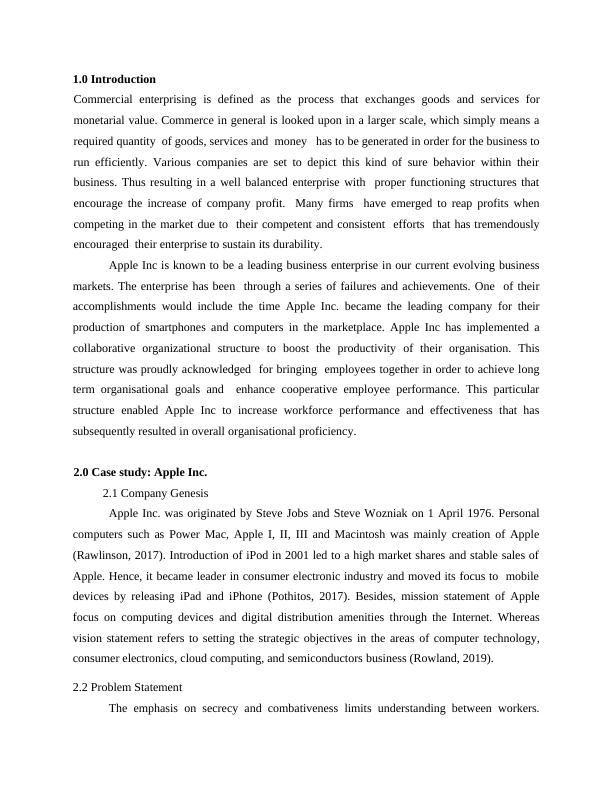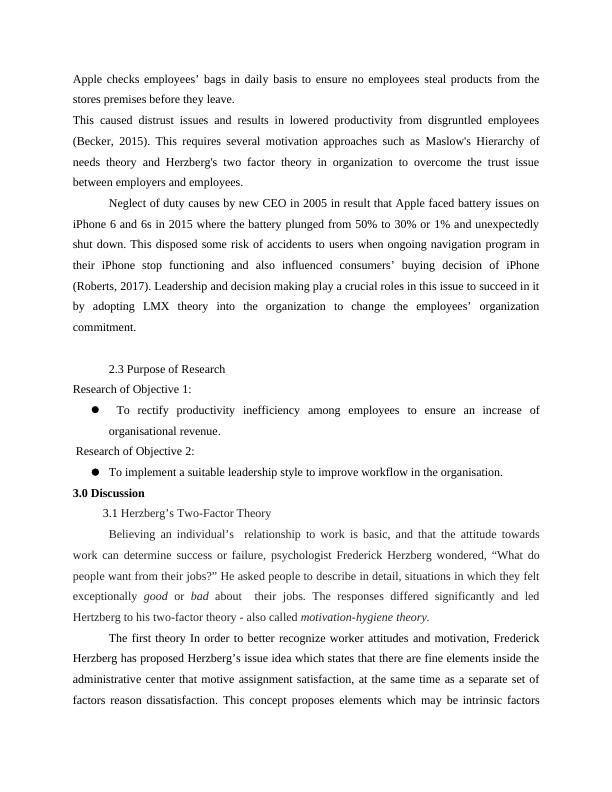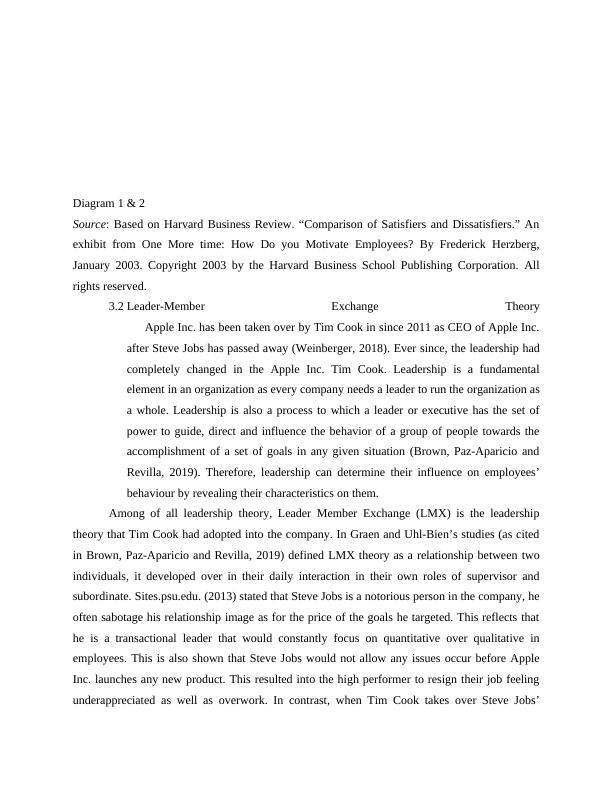(solved) Case Study on Apple Inc
Added on 2020-11-12
12 Pages3668 Words248 Views
1.0 IntroductionCommercial enterprising is defined as the process that exchanges goods and services formonetarial value. Commerce in general is looked upon in a larger scale, which simply means arequired quantity of goods, services and money has to be generated in order for the business torun efficiently. Various companies are set to depict this kind of sure behavior within theirbusiness. Thus resulting in a well balanced enterprise with proper functioning structures thatencourage the increase of company profit. Many firms have emerged to reap profits whencompeting in the market due to their competent and consistent efforts that has tremendouslyencouraged their enterprise to sustain its durability. Apple Inc is known to be a leading business enterprise in our current evolving businessmarkets. The enterprise has been through a series of failures and achievements. One of theiraccomplishments would include the time Apple Inc. became the leading company for theirproduction of smartphones and computers in the marketplace. Apple Inc has implemented acollaborative organizational structure to boost the productivity of their organisation. Thisstructure was proudly acknowledged for bringing employees together in order to achieve longterm organisational goals and enhance cooperative employee performance. This particularstructure enabled Apple Inc to increase workforce performance and effectiveness that hassubsequently resulted in overall organisational proficiency. 2.0 Case study: Apple Inc. 2.1 Company GenesisApple Inc. was originated by Steve Jobs and Steve Wozniak on 1 April 1976. Personalcomputers such as Power Mac, Apple I, II, III and Macintosh was mainly creation of Apple(Rawlinson, 2017). Introduction of iPod in 2001 led to a high market shares and stable sales ofApple. Hence, it became leader in consumer electronic industry and moved its focus to mobiledevices by releasing iPad and iPhone (Pothitos, 2017). Besides, mission statement of Applefocus on computing devices and digital distribution amenities through the Internet. Whereasvision statement refers to setting the strategic objectives in the areas of computer technology,consumer electronics, cloud computing, and semiconductors business (Rowland, 2019).2.2 Problem StatementThe emphasis on secrecy and combativeness limits understanding between workers.

Apple checks employees’ bags in daily basis to ensure no employees steal products from thestores premises before they leave. This caused distrust issues and results in lowered productivity from disgruntled employees(Becker, 2015). This requires several motivation approaches such as Maslow's Hierarchy ofneeds theory and Herzberg's two factor theory in organization to overcome the trust issuebetween employers and employees. Neglect of duty causes by new CEO in 2005 in result that Apple faced battery issues oniPhone 6 and 6s in 2015 where the battery plunged from 50% to 30% or 1% and unexpectedlyshut down. This disposed some risk of accidents to users when ongoing navigation program intheir iPhone stop functioning and also influenced consumers’ buying decision of iPhone(Roberts, 2017). Leadership and decision making play a crucial roles in this issue to succeed in itby adopting LMX theory into the organization to change the employees’ organizationcommitment. 2.3 Purpose of ResearchResearch of Objective 1: To rectify productivity inefficiency among employees to ensure an increase oforganisational revenue. Research of Objective 2:To implement a suitable leadership style to improve workflow in the organisation.3.0 Discussion 3.1 Herzberg’s Two-Factor TheoryBelieving an individual’s relationship to work is basic, and that the attitude towardswork can determine success or failure, psychologist Frederick Herzberg wondered, “What dopeople want from their jobs?” He asked people to describe in detail, situations in which they feltexceptionally good or bad about their jobs. The responses differed significantly and ledHertzberg to his two-factor theory - also called motivation-hygiene theory.The first theory In order to better recognize worker attitudes and motivation, FrederickHerzberg has proposed Herzberg’s issue idea which states that there are fine elements inside theadministrative center that motive assignment satisfaction, at the same time as a separate set offactors reason dissatisfaction. This concept proposes elements which may be intrinsic factors

which might be related to approach satisfaction and extrinsic elements which may be related tomission dissatisfaction. Satisfiers are motivators, even as dissatisfies are hygiene elements. Themotivators symbolized the intellectual dreams that have been perceived as a similarly gain. Thehygiene factors symbolized the physiological dreams which the humans desired and expected tobe fulfilled. Motivating factors are success, popularity for accomplishment, prolongedresponsibility, possibility for boom and improvement and innovative and difficult paintings, atthe same time as hygiene elements are business agency’s tips and manipulate, supervision,running situations, interpersonal individuals of their own family, income, manner protection,reputation, non-public lifestyles along with employee advantages (Psynso, 2019).The Herzberg’s two-issue idea is being accomplished in Apple Inc.. The personnel ofApple Inc. is praised and identified for their accomplishments with the beneficial resource of themanagers via bonus and selling (motivating elements). The personal’s works are very sizable,exciting, motivating and tough for the employee to perform (motivating factors). Apple Inc.earnings form is appropriate, affordable and competitive (hygiene factors). Besides, it hasoffered health care plans to its personnel and gives a comfortable, clean and hygienic going forwalks surroundings similarly to replace and well-maintained a work tool to the employees(hygiene factors) (Psynso, 2019). Diagram 2 : Dissatisfiers areHygiene Theory

Diagram 1 & 2Source: Based on Harvard Business Review. “Comparison of Satisfiers and Dissatisfiers.” Anexhibit from One More time: How Do you Motivate Employees? By Frederick Herzberg,January 2003. Copyright 2003 by the Harvard Business School Publishing Corporation. Allrights reserved.3.2Leader-MemberExchangeTheoryApple Inc. has been taken over by Tim Cook in since 2011 as CEO of Apple Inc.after Steve Jobs has passed away (Weinberger, 2018). Ever since, the leadership hadcompletely changed in the Apple Inc. Tim Cook. Leadership is a fundamentalelement in an organization as every company needs a leader to run the organization asa whole. Leadership is also a process to which a leader or executive has the set ofpower to guide, direct and influence the behavior of a group of people towards theaccomplishment of a set of goals in any given situation (Brown, Paz-Aparicio andRevilla, 2019). Therefore, leadership can determine their influence on employees’behaviour by revealing their characteristics on them. Among of all leadership theory, Leader Member Exchange (LMX) is the leadershiptheory that Tim Cook had adopted into the company. In Graen and Uhl-Bien’s studies (as citedin Brown, Paz-Aparicio and Revilla, 2019) defined LMX theory as a relationship between twoindividuals, it developed over in their daily interaction in their own roles of supervisor andsubordinate. Sites.psu.edu. (2013) stated that Steve Jobs is a notorious person in the company, heoften sabotage his relationship image as for the price of the goals he targeted. This reflects thathe is a transactional leader that would constantly focus on quantitative over qualitative inemployees. This is also shown that Steve Jobs would not allow any issues occur before AppleInc. launches any new product. This resulted into the high performer to resign their job feelingunderappreciated as well as overwork. In contrast, when Tim Cook takes over Steve Jobs’

End of preview
Want to access all the pages? Upload your documents or become a member.
Related Documents
Apple Inc.: Products, Competitors, Strengths, Weaknesses, Mission and Visionlg...
|7
|977
|444
International Business Analysis of Apple Inclg...
|14
|3545
|475
Apple Inc. Marketing: Analysis of Industry and Competitive Environmentlg...
|16
|3817
|499
Strategic Manufacturing Management: A Case Study of Apple Inc.lg...
|16
|3275
|392
Corporate Communication: Analysis of Apple Inc. Strategies and Abilitieslg...
|8
|1538
|219
Introduction to Management Assignment - Apple Inclg...
|10
|2938
|63
